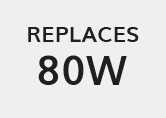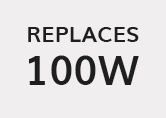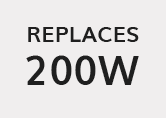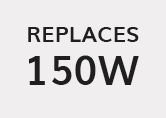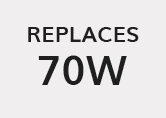Downlights
Downlights are a fantastic lighting solution for all types of homes, whether modern or traditional. They can offer a contemporary feel, especially when used in bathrooms and kitchens and also add lots of character. Downlights are ideal if you want an even distribution of light that a solo pendant will not provide.
Available in a wide range of different colour temperatures, it is important to consider what the room will be used for. A living room may command warmer tones, to promote relaxation and calm, so dimmers are good idea. Bathrooms benefit from the bright precise lighting generated by cooler toned recessed downlights.

